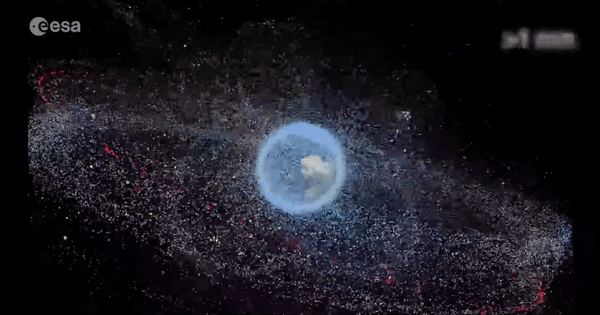Trillium signs ESA Zero Debris Charter: Tackling one of space’s greatest challenges
“We are all astronauts on a little spaceship called Earth,” wrote Richard Buckminster Fuller in his 1968 book “Operating Manual for Spaceship Earth.”
On 16 June 2025, Trillium proudly joined the European Space Agency’s Zero Debris Charter, standing alongside partners across the space sector to address one of the defining challenges of modern space activity: orbital debris.
Every day, over 36,000 uncontrolled objects larger than a tennis ball orbit the Earth. These fragments, ranging from spent rocket stages to tiny remnants of satellites, pose growing risks to the spacecraft and missions that underpin navigation, communications, climate monitoring, and scientific research. The charter is a commitment to safe, sustainable, and responsible operations in space, ensuring that the AI, science, and missions we care about have a secure stage to operate on. ✨
Why does space debris matter?
Space debris is a systemic challenge. Collisions can generate more fragments, triggering a chain reaction known as the Kessler Syndrome, which could make certain orbits hazardous for decades. For Trillium, whose work relies on satellites to collect and analyze critical Earth and space data, this is a challenge we cannot ignore. Originally described by Donald J. Kessler in his 1978 paper “Collision frequency of artificial satellites: The creation of a debris belt,” the Kessler syndrome states that as the number of satellites in orbit increases, so too does the probability of collisions; collisions beget fragments which beget more collisions, and so on
Our approach: AI, collaboration, and innovation
At Trillium and FDL, we utilise AI as a tool to manage and mitigate these potential risks. Though technology alone isn’t enough, the charter emphasizes collaboration across agencies, research institutions, and industry, and that’s where the heart of the solution lies.
Signing the ESA Zero Debris Charter strengthens our commitment to responsible space stewardship. It aligns with our vision of creating tools, systems, and partnerships that make space safer, so the missions we launch today and in the future can operate without threat. ✨
Wilson, et al. The space sustainability paradox and the balance between sustainability from space and sustainability of space - www.researchgate.net/ publication/373272565_The_ Space_Sustainability_Paradox
Trillium’s part to play
ESA’s Zero Debris Charter is a rallying point: a chance to take real steps towards a safer orbital environment. By 2030, the aim is nothing less than a future where missions can operate free from the growing risks of debris.
Signing the Charter is our promise to use our AI and science capabilities for positive change in space. Our work will help space remain a frontier of safe exploration, as opposed to accident-prone clutter.
With this step, we’re standing alongside ESA and fellow charter signing partners, to back a vision where future missions, science, and curiosity can all thrive safely in orbit.
💡 Learn more about the ESA Zero Debris Charter’s impact → watch here
💡 Read more → ZERO DEBRIS CHARTER
At Trillium Technologies, we’re committed to better understanding our changing climate and using AI to become better stewards of our planet and its orbital environment. Collaboration is at the heart of that mission.
If you’d like to get involved or explore ways we can work together, we’d love to hear from you → team@trillium.tech
Welcome to Intelligence Age
Read and download our second edition Intelligence Age #002: The Tragedy of the Cosmos: Sustainability in Orbit and Beyond.
If Earth is a spaceship then it must be continuously monitored, managed, and even repaired if needed. It must be treated with care and respect. It must be seen for what it is: vulnerable, precious, inherently limited. We have a duty to Spaceship Earth, just like we have a duty to space.
In this edition of Intelligence Age, we talk about this duty. It’s easy to ask: how can we succeed with space sustainability when we’re not able to adequately take care of our own planet? The pages ahead argue that the two are related, inextricably so.
Thanks as ever to our contributors of this edition, Dr. Chris Bridges, Dr. Minoo Rathnasabapathy and Dr. Thomas Berger. Read more about their contributions here.
About Intelligence Age
After the information age comes the Intelligence Age, when artificial intelligence will enable technology on Earth and in outer space to not only be infinitely connected, but in conversation with itself.
Let’s join the conversation.
Intelligence Age is published multiple times a year by Trillium Technologies. Each edition features a discussion between today’s AI and space leaders about tomorrow’s most pressing problems and most promising ideas, from AI safety and ethics to inter-planetary stewardship.






